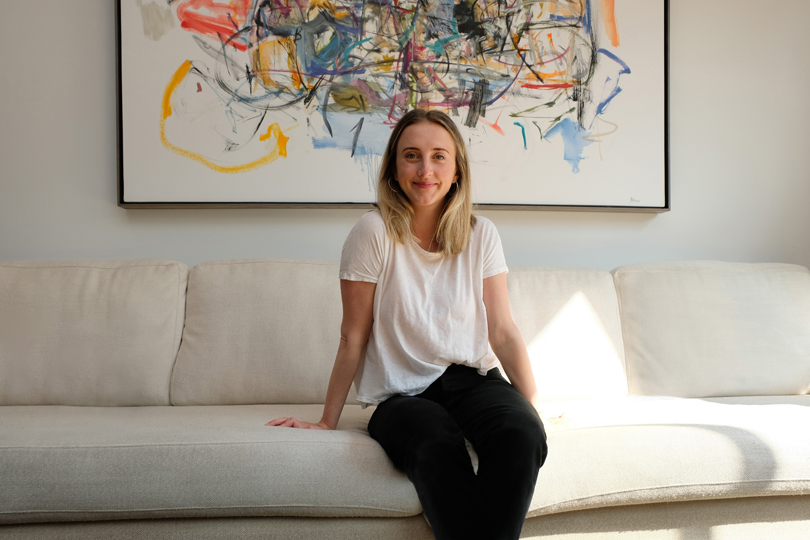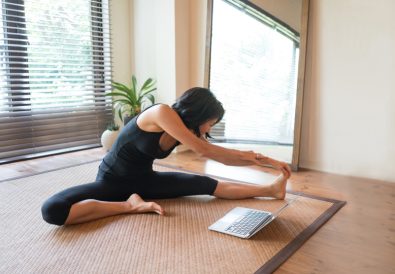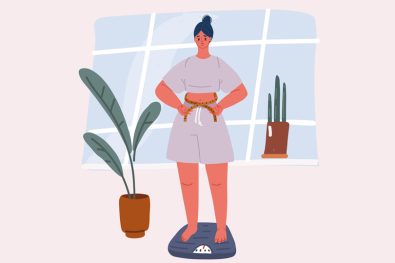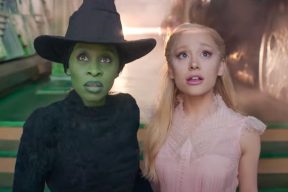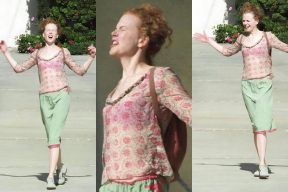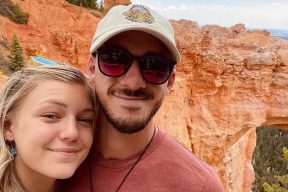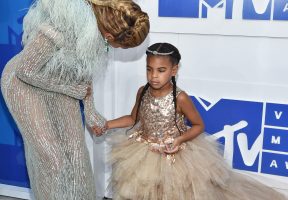Growing up, Ashley Mulvihill wanted to be a ballerina. She studied at Canada’s prestigious National Ballet School to become a professional dancer, balancing traditional academics, courses on the history of art and ballet, and advanced dance training. But in her graduating year, she suffered a career-ending back injury that send her into a tailspin, suddenly needing to redefine and reinvent herself. Looking back, she now recognizes the impact that those early art history classes had on her career. But at the time, she did not know what to do.
After going through university, working a long list of “random” jobs, and spending several years travelling, Ash noticed a pattern: she kept finding herself drawn into art galleries. Inspired by the artists she spoke with, she decided to pursue a career in art business and administration. She couldn’t be the artist she always thought she would be, but she could support other artists and bring art to others.
Now, the 32-year-old art connoisseur lives in Toronto with her husband, two little girls (20-month old Lake and three-month old Etta) and her “totally nutso” pup Mowgli and runs her very own art gallery: Ninth Editions, a digital platform that sells limited edition prints and original works by emerging artists and strives to make art accessible to new buyers. Read on as we discuss her unique but inspiring career path, her favourite artists, and her advice for millennials looking to start their own art collection on a budget.
When did you first fall in love with art?
I have loved so many forms of art from as early as I can remember. My mum says I used to put my ear right to the speaker listening to classical music as a really small child. I was in dance, piano, and violin lessons as early as three, and started studying art history in Grade 5 as part of our curriculum at Canada’s National Ballet School. I feel very grateful to my parents for exposing me to the arts as a child; it’s really shaped so much of who I am and how I see the world.
Can you walk us through your career path and how you got to where you are now?
After graduating from Canada’s National Ballet School, with professional dance no longer a career option, I went to Dalhousie University. This was the first time I wasn’t in a highly disciplined environment and, needless to say, I had a great time but had zero direction. I worked at a law firm, wrote my LSATS, worked as a nanny, a bartender, at Canadian Tire head office in logistics—the list is lengthy and very random. It was during this time, both in Toronto and while travelling, that I kept finding myself in galleries, talking to artists. I realized I had so much more knowledge and understanding of the visual arts than I had ever given myself credit for. While I could no longer be the artist, I could work on the administrative side and be immersed in the arts that way.
I tend to be highly focused once I’ve set my sights on something, so I went to the Caribbean to work on private boats, saved for grad school, and was accepted to the Art Business masters at Sotheby’s Institute and moved to London, UK. While there, I worked briefly for two small galleries in London, did grant writing for the Queen Elizabeth Scholarship Trust, spent a summer working at the Peggy Guggenheim in Venice, Italy, then back to Toronto where I worked legitimately every single art related position I could: unpaid, ridiculous hours, in-person, remote, pop-ups, non-profits, museum, art advisory, you name it, and I did it.
I saw a position listed for the music/art programmer role at The Drake and set my sights on it with a kind of crazy-person focus. I tracked down their head curator, Mia Nielsen, to meet in person, and asked every person I knew who maybe-knew-someone-who-worked-at-The-Drake to forward my resume onto HR. They didn’t hire me on account of having zero music programming experience, but I offered to help on art projects outside business hours and six months later, when the person they hired didn’t work out, I landed the job. The position ended up being solely within the visual arts, where I worked with a huge a variety of emerging to mid-career artists, operating at lightning speed on diverse projects, all alongside really talented and passionate colleagues. The role helped me grow immensely and really set me on the path to launching Ninth Editions.
What inspired you to launch Ninth Editions, and what is it all about?
I launched Ninth Editions in November 2018 because of a gap I saw in the market. Having worked directly with artists for a number of years, friends and peers often asked me where to find unique, interesting art at a more affordable price. I knew many of the emerging artists I had worked with were actively creating new work but didn’t have the resources to be promoting and selling their work to a broad audience. I wanted to connect the two. My role is really taking out a lot of the leg work by using my years of research to provide a highly curated selection of exclusive artworks by the most exciting up and coming artists all under $1,000.
So, you have two little ones. How have you found balancing motherhood and running your own business?
Every day is different—some days I wonder how I thought I could manage it all and other days I feel like I’m in total boss mode. I launched Ninth Editions when I was six months pregnant with the intention to get it up and running, prepare what I needed in advance to keep it operational in the early post-partum months, but not necessarily hit the marketing/promotion side too hard until I was ready. Though, as I’m learning more and more every day, things tend not to go to plan and opportunities keep popping up that I’m genuinely so excited about it’s been much harder to step back. I also feel a huge responsibility to the artists, to make sure their work is well-represented and selling, so when I see the chance to promote them, I take it. I do have Etta with me almost all the time, so if I can fit in four or five hours of work between nursing, changing, and feeding myself, etc., I’m happy. Working with a new-born, sometimes physically attached to me, is certainly not glamourous, but I’m laying the foundation for the life I want and the business I want to run. I love working, I get a lot of satisfaction and joy from it, but I aim to work every day with purpose. I didn’t have a maternity leave this time around but I’m totally okay with that. “Having it all” takes sacrifice and hard work.
I must absolutely mention I have an incrediblepartner in my husband who is a huge support in every way possible and we have a full-time nanny who looks after our older daughter and keeps the house in order. I have to give credit where credit is due! None of this would be possible without having an amazing support system. I am very grateful and keenly aware of the opportunities that affords me.
Do you have any advice for new working moms?
As a fairly new working mom I don’t have a lot of perspective on it, but I have learnt that it is very important to also take care of yourself. I tend to put my needs last, but when I consistently cut sleep, exercise, eating proper meals, etc., I burn out really quickly and then I’m no use to anyone. Also, rely on your community—no woman is an island!
How has Ninth Editions grown or evolved since you started it?
It’s grown a lot, with a whole schedule of new artists coming down the pipeline and partnerships in the works. I’ve been continuing to add new artists since the launch, almost doubling the amount of art on the site in the past six months. It’s still a highly curated selection but it’s important to me that it continues to grow and evolve so collectors can always check back and see something new. I’ve also grown the collection of original works on the site, rather than purely featuring editions, at both the request of collectors who have expressed interest in them and finding artists I’m really excited to work with. I love the online model for that very reason, it’s so adaptable.
What does the name “Ninth Editions” mean, by the way?
Ninth Editions is my ninth job in the art world since grad school, including internships, pop-ups, consulting, and full-time work. I think that so often we, particularly women, can over-think whether we’re ready to take on this next challenge and I wanted the name to be a reminder to myself that I was ready and capable. It also felt right to make the name personal because of how much I believe in the concept of making art accessible to everyone.
I love that Ninth Editions is all about making contemporary art accessible to new buyers. Why was this a priority for you?
I think that there’s a huge misconception that collecting art is reserved for the ultra wealthy and that art is elitist. Mainstream media features only the biggest sales, where artworks are being sold for hundreds of millions of dollars to billionaires, and then, in the real world, galleries can often feel unwelcoming. I feel like this puts people on the defensive, causing them to believe they can’t afford to be an art collector if they have a small budget or that they feel out of place buying art. This ultimately does a great disservice to artists working at many levels of the art world and I think has hindered the growth of the art community, particularly in Canada, where it’s not part of our curriculum or culture. Options are limited, unless you have a wealth of time to dig deep or have existing knowledge of the art world, and I totally appreciate why people have bought poster prints or big box store wall-fillers in the past. My hope is that by providing an access point to affordable art by emerging artists we can have far more interesting artwork in our spaces, create more awareness of the arts and their incredible value, and most importantly help build a healthy art community where real people’s careers are directly impacted.
I think you’re really on to something! The whole art world can be pretty intimidating. What would you say to a millennial who wants to start their own art collection but doesn’t know where to start, plus is on a budget?
There are so many options! I am a huge believer in buying directly from the artist (if they don’t have gallery representation) and there are many avenues to connect with them both in real life and digitally. If you don’t necessarily have time to follow artists and negotiate your own purchase, there are a few highly curated sites (read: Ninth Editions J) that offer very affordable artworks you can peruse on your own time and have shipped directly to you. Many galleries will allow you to pay off an artwork over the course of a year, as well. There are options for every budget. I truly believe that. It may just take a little more time, but the rewards of having something unique and that speaks to you is invaluable.
Do you remember what your first art purchase was?
I bought my first real artwork from a tiny little shop when I was backpacking in India after undergrad. It’s a portrait of one of the mistresses of the Maharaja from the region we were in; the painter had passed, and no one knew the name of the woman, but she had this strength about her that I found completely captivating. I spent way more than I should have on it but I couldn’t imagine not traveling home with it. I ended up shipping it back to my parents in a tube and still have it by my bedside to this day.
Do you have any tips for arranging or hanging art at home? Are gallery walls still a thing or a trend of the past?
Gallery walls are definitely still a thing and I think it’s a great way to showcase a wide variety of styles, mediums, and sizes within one space. It’s often a more affordable approach and has the flexibility to evolve over time, since you can easily add or remove pieces. I think there’s an incredible power to having large works, but they tend to be quite static in a space and are usually a more expensive initial investment.
If you can afford it, I always recommend choosing non-reflective UV glass to preserve the integrity of the artwork and the clarity of the glass will really make it pop. A custom frame will go a long way but many pre-fabricated frames are well constructed these days and offer a more affordable solution. I’ve also hung artworks with rare-earth magnets, office supply clips on nails, or sticky scrapbooking corners. If you like the look of it and gets the piece up without damaging it, I say go for it.
Who are your all-time favourite artists?
That is such a hard question—I love so many for so many different reasons! Big-name living artists I could never afford include El Anatsui not only for the beauty of his tapestry works but how they draw attention to trade, slavery, consumerism, and the environment; Tracey Emin for how she challenges the way women are able to critically and publicly discuss their personal life whether it be substance abuse, mental health, sex, or gender roles; and Olafur Eliasson for his large-scale, visually stunning installations that draw attention to sustainable development and providing underserved communities with access to electricity.
What about your favourite artistic movements/eras?
A few favourite movements are Surrealism, Abstract Expressionism, Minimalism, Light and Space movement, and the Pictures Generation. For contemporary art, there are way too many ‘isms’ to go down that rabbit hole.
I love that you try to support emerging artists. Which new artists should be on our radar right now?
Can I just list all of the Ninth Editions artists? Haha! I really believe in all of them; they’re so talented and they’re affordable because they’re emerging and/or they’ve produced editions as an access point for collectors who have been priced out of their original artworks. Laura Dawe, for example, whose work sells through established galleries in the thousands of dollars, has a limited edition print available on Ninth Editions for $110. Alison Postma and Cam Champ, who both have editions on the site, have huge installations at the new Drake Motor Inn. They’re artists that are doing incredible things and are involved in great projects, yet still have some work listed at affordable prices.
What new trends in the art world are you excited about?
I wouldn’t categorize it as a trend, but I like that Instagram is making it easier for people to gain access and insight into the lives of artists and where to source art. I think it’s helping grow that awareness of who they are, their process, what’s available, and what a collector might be interested in.
The flip side of this is whether that starts to isolate artists who are not as comfortable being on social media or whether likes/comments start to influence, negatively or positively, an artist’s practice, but in general I think it’s helping.
If there was one thing you could change about the art industry, what would it be?
Transparency around money. I think there’s a lot of nonsense that artists are fed early in their career about how if they talk about money in relation to their art it somehow devalues the artistic integrity. Supermarkets don’t accept art for food, art schools don’t accept art for tuition, so why would you ever tell an artist that talking about price equates their art to an object? My poor husband now fears this conversation coming up because I inevitably go on long impassioned tangents about the absurdity of it all. We need to empower artists to feel comfortable talking about pricing, which I believe would ultimately help collectors understand and appreciate why works are priced the way they are. If it’s this awkward conversation that people are always uncomfortable having no one wins. The whole structure assumes artists are incapable of understanding the art market and advocating for their work, this is absolutely not true but many programs do not equip artists with the tools to discuss money frankly. I totally appreciate that art is complex to price and that a work of art is so much more than the price tag, but if we want a healthy art community with artists who are able to sustain their practice without having to devote hours to grant writing while juggling two or three jobs, we need them to be able to make a living from their art in the commercial world.
Do you have any tips for people who want to pursue a career in the art world?
There are a lot of roles within the art world and no two are the same. Take internships/jobs at a few different types of organizations to gain experience in a variety of positions. Having a holistic understanding of how the art world works is invaluable and the relationships you’re able to build will help you find the area you’re ultimately suited for and passionate about. It’s also always good to remember, as with any job in any industry, you’ve got to seriously hustle—there are not enough jobs for everyone, so it’s important to work hard, be consistent, and be professional.
What are your favourite art spots to visit in the city?
One of my favourite spaces to visit is the Henry Moore sculpture room at the Art Gallery of Ontario. I like sitting on the floor and taking it all in. I’ve always loved sculpture, but after taking a mold making class at OCAD, I now have even more reverence for sculptors. I also really enjoy the Power Plant and the way the entire space can change so drastically from one exhibition to another.
What’s next for you and for Ninth Editions?
I’ve recently signed on to take over major exhibitions for The Drake (Mia Nielsen, their former head curator, recently became the director of Art Toronto) as part of my consulting practice and have a few other clients I’m commissioning public art projects for. I’m really enjoying being able to work with artists in another capacity and on a diverse range of projects.
For Ninth Editions, I’m really excited about a few partnerships, exhibitions, and programming events I’m working on that will help get the name out and grow awareness of what Ninth Editions is all about. I’ve also been developing a Trade Program for interior designers and architects that are interested in incorporating art into their spaces. It’s really wonderful to see the care they put into every detail for their clients and the standards they keep across the board. I’ve never really understood when a designer imports a faucet from Italy and then puts a Home Sense print above the mantel.

